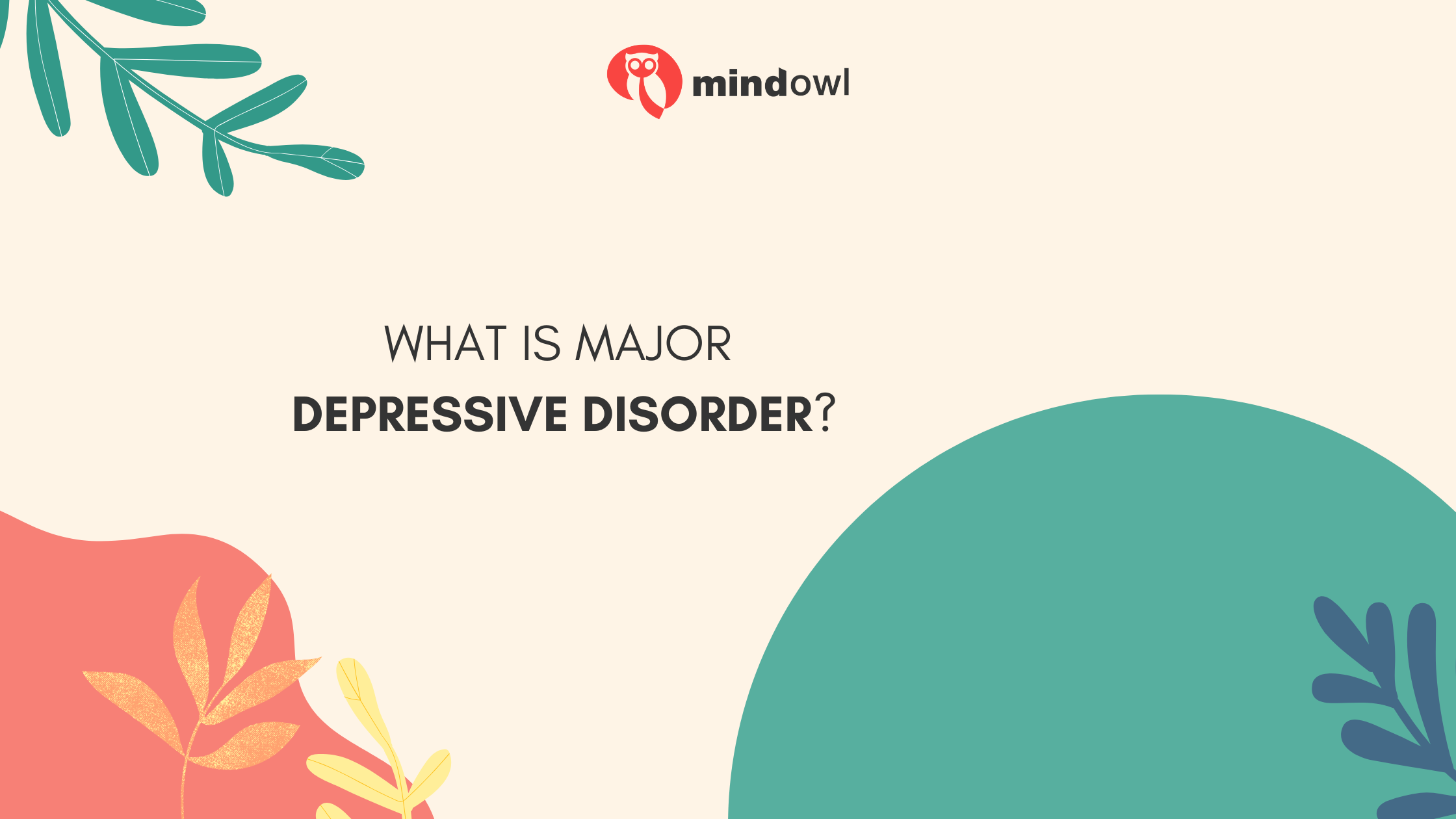Major Depressive Disorder (MDD) is a pervasive and debilitating mental health condition that significantly impacts individuals’ emotional, physical, and social functioning. Characterized by persistent sadness, loss of interest or pleasure, and accompanying physical and cognitive symptoms, MDD is one of the leading causes of disability worldwide. This article explores the prevalence, diagnostic criteria, causes, risk factors, treatment options, and emerging research surrounding MDD. A detailed examination of the disorder highlights its complexity, underscores the importance of early diagnosis, and emphasizes the role of individualized, evidence-based care.
Major Depressive Disorder, commonly referred to as clinical depression, is more than just a transient phase of low mood. It represents a profound and persistent disruption in emotional well-being that affects millions globally. According to the World Health Organization, depression is a leading contributor to the global disease burden, affecting an estimated 5% of adults. This disorder not only undermines quality of life but also increases the risk of comorbid conditions and premature mortality. Understanding MDD’s multifaceted nature is critical for clinicians, patients, and society as a whole.

Overview of MDD
MDD is a chronic mental health condition marked by a range of emotional, cognitive, and physical symptoms. The Diagnostic and Statistical Manual of Mental Disorders, Fifth Edition (DSM-5), categorizes MDD as a mood disorder, characterized by at least one major depressive episode (MDE). These episodes involve a combination of symptoms that persist for a minimum of two weeks, significantly impairing daily functioning.
Epidemiology
MDD affects approximately 7% of adults in the United States annually, with higher prevalence rates in women compared to men. While the onset often occurs during adolescence or early adulthood, it can emerge at any age. Social determinants, such as poverty, trauma, and lack of social support, further increase vulnerability.
Symptoms and Diagnostic Criteria
The DSM-5 outlines specific criteria for diagnosing MDD. A major depressive episode must include at least five of the following symptoms, with at least one being either depressed mood or anhedonia (loss of interest or pleasure):
- Persistent feelings of sadness, emptiness, or hopelessness
- Diminished interest in most activities
- Significant weight changes or appetite disturbances
- Insomnia or hypersomnia
- Psychomotor agitation or retardation
- Fatigue or loss of energy
- Feelings of worthlessness or excessive guilt
- Impaired concentration or indecisiveness
- Recurrent thoughts of death or suicidal ideation
These symptoms must cause clinically significant distress or impairment and should not result from substance use, medical conditions, or other mental disorders.
Causes and Risk Factors
Biological Factors
MDD has a strong genetic component, with heritability estimates ranging from 40% to 50%. Neurotransmitter imbalances, particularly involving serotonin, norepinephrine, and dopamine, play a central role in its pathophysiology. Neuroimaging studies reveal structural and functional changes in brain regions such as the prefrontal cortex and amygdala.
“Understanding the biological underpinnings, particularly the role of serotonin, norepinephrine, and dopamine dysregulation, is critical in tailoring effective treatments that restore balance and improve patient outcomes.” added Dr. Alexander Sidawi, Primary Psychiatrist at Analyze Psychiatry.
Psychological and Social Factors
Adverse childhood experiences, such as abuse or neglect, significantly increase the risk of developing MDD. Chronic stress, loss of loved ones, and interpersonal conflicts are common triggers. Social determinants, including socioeconomic status and access to resources, also modulate risk.
Diagnosis
Accurate diagnosis of MDD requires a thorough clinical assessment, including patient history, physical examination, and psychological evaluation. Screening tools, such as the Patient Health Questionnaire-9 (PHQ-9), are valuable for identifying depressive symptoms and monitoring treatment response. Differential diagnoses include bipolar disorder, anxiety disorders, and medical conditions like hypothyroidism or anemia.
Treatment Approaches
Effective treatment of MDD often requires a combination of therapeutic modalities tailored to the individual’s needs.
Pharmacotherapy
First-line pharmacological treatments include selective serotonin reuptake inhibitors (SSRIs) and serotonin-norepinephrine reuptake inhibitors (SNRIs). Other options include bupropion, mirtazapine, and newer agents like intranasal esketamine for treatment-resistant depression. Antidepressant response typically manifests within 4 to 8 weeks, though optimization of dosage or switching agents may be necessary.
Psychotherapy
Psychotherapeutic interventions, such as cognitive-behavioral therapy (CBT) and interpersonal therapy (IPT), are evidence-based approaches for treating MDD. These therapies focus on modifying maladaptive thought patterns, improving coping skills, and addressing interpersonal issues.
Neuromodulation Techniques
Electroconvulsive therapy (ECT) remains a highly effective treatment for severe or refractory MDD. Transcranial magnetic stimulation (TMS) offers a non-invasive alternative with demonstrated efficacy. Both techniques aim to modulate brain activity and improve mood regulation.
Prognosis and Management
MDD is a recurrent condition, with up to 85% of individuals experiencing multiple episodes. Long-term management emphasizes functional recovery and relapse prevention. Maintenance treatments, including pharmacotherapy and psychotherapy, are critical for sustaining remission. Mindfulness-based approaches and lifestyle modifications, such as regular exercise and balanced nutrition, also contribute to overall well-being.
Comorbidities and Complications
MDD frequently coexists with other psychiatric conditions, such as anxiety disorders and substance use disorders, complicating treatment and prognosis. Additionally, individuals with MDD are at heightened risk for medical comorbidities, including cardiovascular disease and diabetes. Suicide remains a major complication, underscoring the importance of risk assessment and intervention.
Table 1: Common Comorbidities in MDD
| Psychiatric Comorbidities | Medical Comorbidities |
| Anxiety disorders | Cardiovascular disease |
| Substance use disorders | Diabetes |
| Eating disorders | Obesity |
Emerging Research and Future Directions
Advances in understanding MDD include identifying biomarkers for personalized treatment and exploring novel therapies, such as ketamine and psilocybin. The integration of digital tools, like mobile health applications, offers opportunities for enhanced monitoring and support. Research on neuroprogressive changes and patient-reported outcomes continues to shape innovative care strategies.
Table 2: Innovations in MDD Treatment
| Emerging Therapies | Key Features |
| Intranasal esketamine | Rapid symptom relief in treatment-resistant cases |
| Digital mental health tools | Remote monitoring and intervention |
| Psychedelic-assisted therapy | Potential for profound symptom improvement |
Conclusion
Major Depressive Disorder is a complex and multifaceted condition requiring comprehensive and individualized care. Advances in diagnostic methods and treatment options continue to improve outcomes for those affected. By fostering a deeper understanding of MDD, clinicians and researchers can better address its challenges, paving the way for enhanced recovery and quality of life for patients worldwide.
MindOwl Founder – My own struggles in life have led me to this path of understanding the human condition. I graduated with a bachelor’s degree in philosophy before completing a master’s degree in psychology at Regent’s University London. I then completed a postgraduate diploma in philosophical counselling before being trained in ACT (Acceptance and commitment therapy).
I’ve spent the last eight years studying the encounter of meditative practices with modern psychology.

